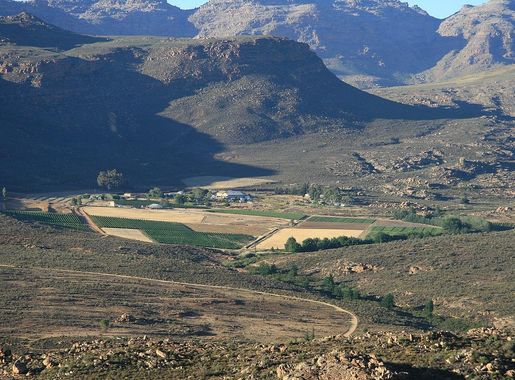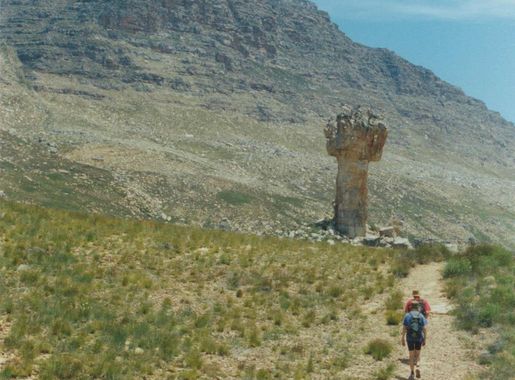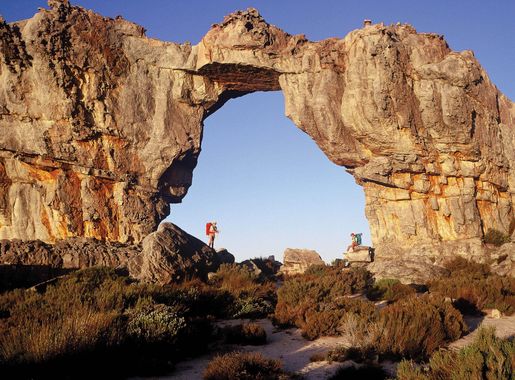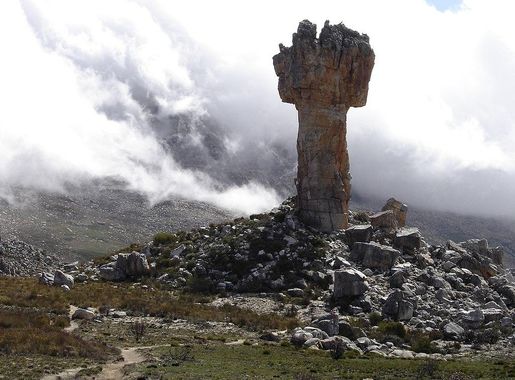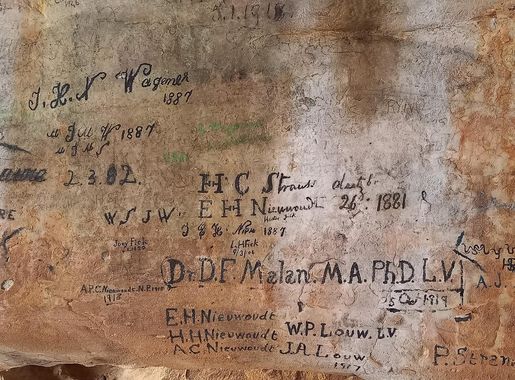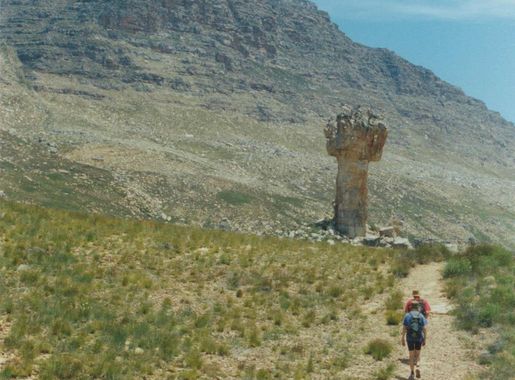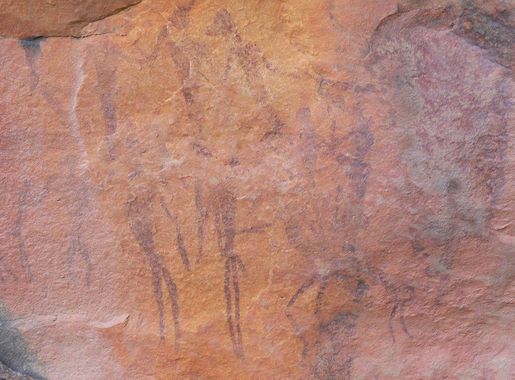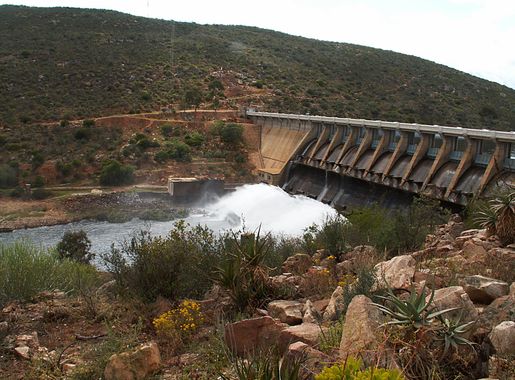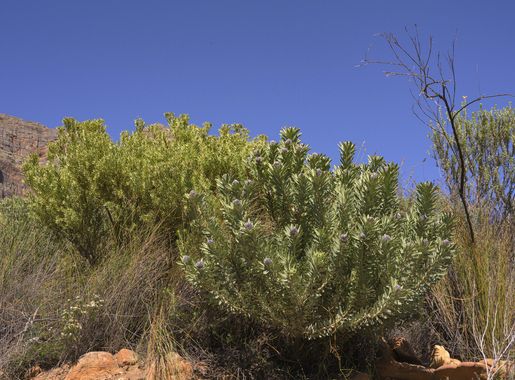
The Majestic Cederberg Mountains: South Africa's Natural Gem
Discover the Cederberg Mountains: A South African paradise of dramatic rock formations, ancient rock art, and vibrant wildflowers. Ideal for hikers, climbers, and nature lovers.
Nestled in the Western Cape of South Africa, the Cederberg Mountains offer a breathtaking escape into nature. This rugged mountain range is famous for its dramatic rock formations, ancient San rock art, and vibrant wildflower displays. The Cederberg Mountains are a haven for outdoor enthusiasts, providing ample opportunities for hiking, rock climbing, and exploring its unique landscapes. The area is rich in history and culture, with many well-preserved examples of San rock art that date back thousands of years. These ancient paintings are scattered throughout the region, offering a fascinating glimpse into the lives of the early inhabitants. The Cederberg Mountains are also part of the UNESCO World Heritage Site, the Cape Floral Region, known for its incredible biodiversity. Visitors to the Cederberg Mountains can enjoy a range of activities, from leisurely walks to challenging hikes. The iconic Wolfberg Arch and Maltese Cross are must-see landmarks, providing stunning views and photo opportunities. For those interested in stargazing, the clear night skies of the Cederberg are perfect for observing constellations and the Milky Way. With its combination of natural beauty, cultural significance, and recreational activities, the Cederberg Mountains are a must-visit destination for any traveler exploring South Africa.
Local tips in Cederberg Mountains
- Visit in spring (August to October) to see the wildflowers in full bloom.
- Carry plenty of water and sun protection; the area can get very hot and dry.
- Check weather forecasts before hiking, as conditions can change rapidly.
- Hire a local guide to explore the San rock art sites for a deeper understanding of their history.
- Book accommodation in advance, especially during peak seasons.
The Majestic Cederberg Mountains: South Africa's Natural Gem
Nestled in the Western Cape of South Africa, the Cederberg Mountains offer a breathtaking escape into nature. This rugged mountain range is famous for its dramatic rock formations, ancient San rock art, and vibrant wildflower displays. The Cederberg Mountains are a haven for outdoor enthusiasts, providing ample opportunities for hiking, rock climbing, and exploring its unique landscapes. The area is rich in history and culture, with many well-preserved examples of San rock art that date back thousands of years. These ancient paintings are scattered throughout the region, offering a fascinating glimpse into the lives of the early inhabitants. The Cederberg Mountains are also part of the UNESCO World Heritage Site, the Cape Floral Region, known for its incredible biodiversity. Visitors to the Cederberg Mountains can enjoy a range of activities, from leisurely walks to challenging hikes. The iconic Wolfberg Arch and Maltese Cross are must-see landmarks, providing stunning views and photo opportunities. For those interested in stargazing, the clear night skies of the Cederberg are perfect for observing constellations and the Milky Way. With its combination of natural beauty, cultural significance, and recreational activities, the Cederberg Mountains are a must-visit destination for any traveler exploring South Africa.
When is the best time to go to Cederberg Mountains?
Iconic landmarks you can’t miss
The Baths Natural Hot Springs
Discover the rejuvenating power of nature at The Baths Natural Hot Springs, a serene haven surrounded by stunning mountains and lush valleys.
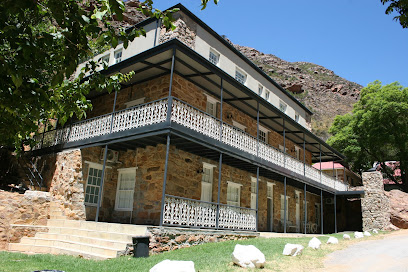
Kagga Kamma Nature Reserve
Discover the serene Kagga Kamma Nature Reserve, a unique lodge experience in the Cederberg region, blending adventure, nature, and comfort.
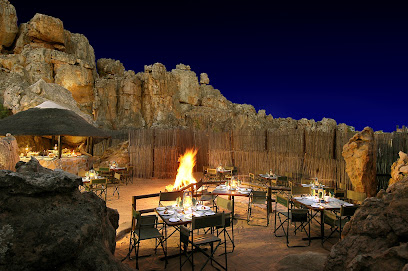
Cederberg Wilderness Area
Explore the stunning landscapes and rich biodiversity of Cederberg Wilderness Area, a pristine nature preserve in South Africa's Western Cape.
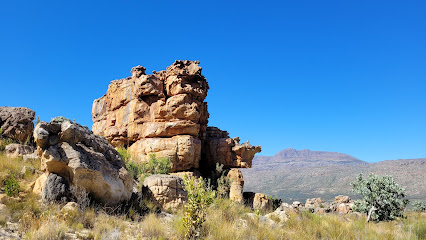
Kromrivier Cederberg Park
Discover the culinary treasures of Kromrivier Cederberg Park, where breathtaking views meet exquisite local cuisine in the heart of nature.
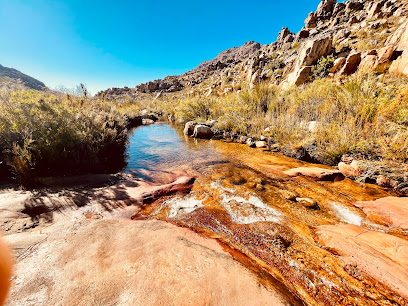
Cederberg Algeria Campsite
Explore the breathtaking beauty of Cederberg Algeria Campsite, a serene retreat for nature lovers in the heart of the Cederberg Mountains.

Cederkloof Botanical Retreat
Discover tranquility and adventure at Cederkloof Botanical Retreat in the breathtaking Cederberg mountains, your perfect getaway destination.
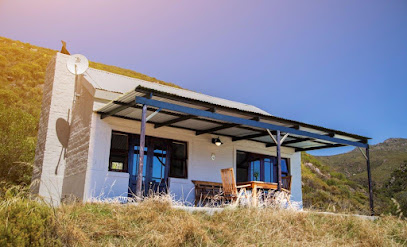
Sanddrif Holiday Resort, Cederberg
Experience the serene beauty of Sanddrif Holiday Resort in the Cederberg Mountains - your perfect escape for adventure and relaxation.
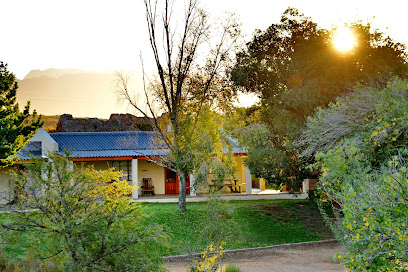
Mount Ceder | Cederberg | Accommodation | Restaurant | Activities
Experience the breathtaking beauty and tranquility of Mount Ceder in the Cederberg mountains, where outdoor adventures and culinary delights await.
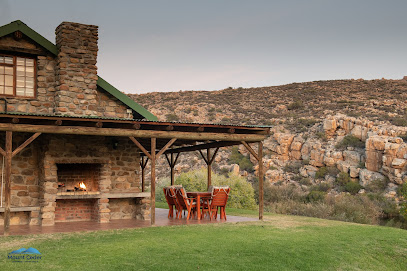
Stadsaal Caves
Explore the stunning Stadsaal Caves in the Cederberg Wilderness Area, where nature's artistry meets rich history in South Africa's breathtaking landscape.

Koue Bokkeveld Mountain Catchment Area
Experience the breathtaking beauty of Koue Bokkeveld Mountain Catchment Area, where majestic landscapes and diverse wildlife await your exploration.
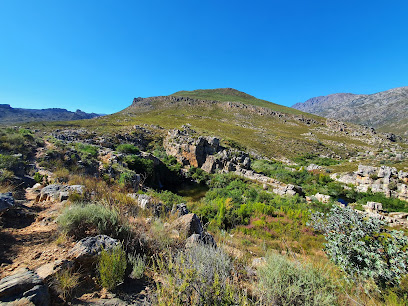
Enjo Nature Farm
Experience the serenity of Enjo Nature Farm in the Cederberg, where self-catering comfort meets breathtaking nature and outdoor adventure.
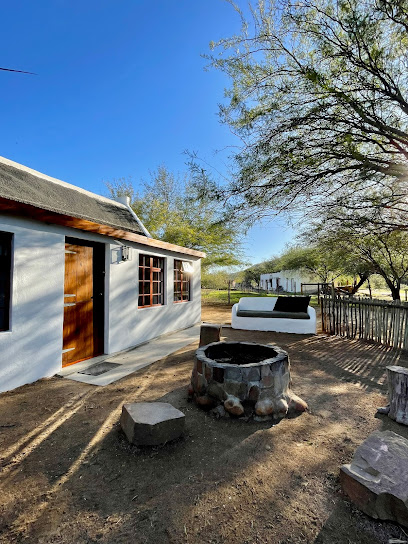
Sevilla Rock Art Trail
Explore Sevilla Rock Art Trail, a captivating historical site in South Africa featuring ancient rock engravings and breathtaking landscapes.
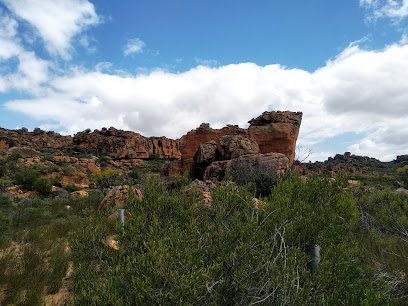
Cederberg Algeria Wilderness Cottages
Experience the beauty of the Cederberg mountains at Algeria Wilderness Cottages, a peaceful self-catering retreat in the heart of nature.
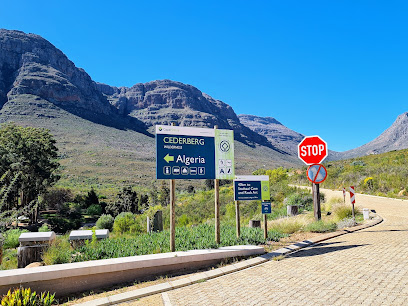
Driehoek Tourist Farm Cederberg
Discover the beauty of the Cederberg Mountains at Driehoek Tourist Farm, where adventure meets tranquility in a picturesque campground setting.
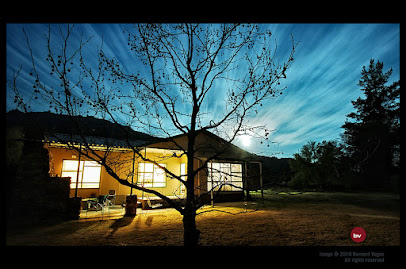
Gecko Creek Wilderness Lodge
Discover the tranquility of Gecko Creek Wilderness Lodge, a perfect retreat for nature lovers in Clanwilliam, South Africa.

Unmissable attractions to see
Enjo Nature Farm
Experience the beauty of Cederberg at Enjo Nature Farm, your perfect self-catering escape in the heart of nature's paradise.
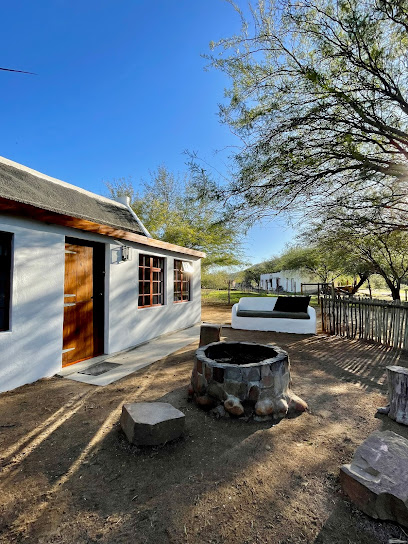
Truitjieskraal
Unveil the natural wonders of Truitjieskraal, a serene tourist attraction in South Africa's Cederberg mountains, perfect for adventurers and nature lovers.
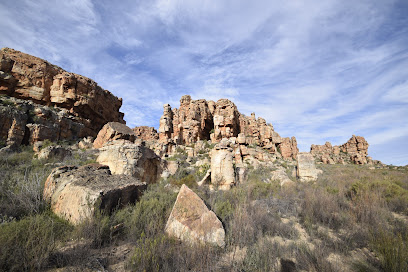
Maltese Cross
Experience the breathtaking beauty of Maltese Cross, a stunning rock formation and captivating tourist attraction in the picturesque Cederberg region.
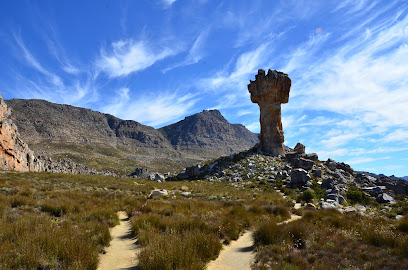
Middelberg Waterfall
Explore the stunning Middelberg Waterfall, a breathtaking natural attraction in South Africa, perfect for nature lovers and adventure seekers alike.
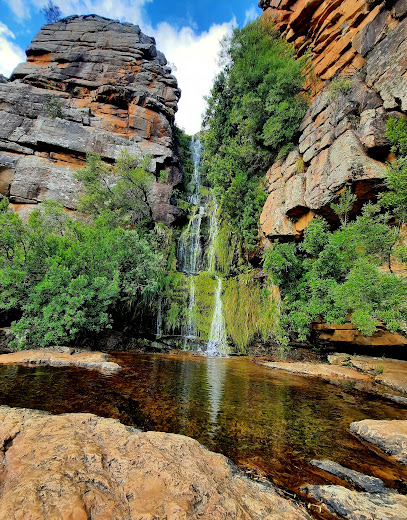
Wolfberg Cracks
Discover the breathtaking Wolfberg Cracks in South Africa's Cederberg Mountains, a hiker's paradise with stunning rock formations and panoramic views.
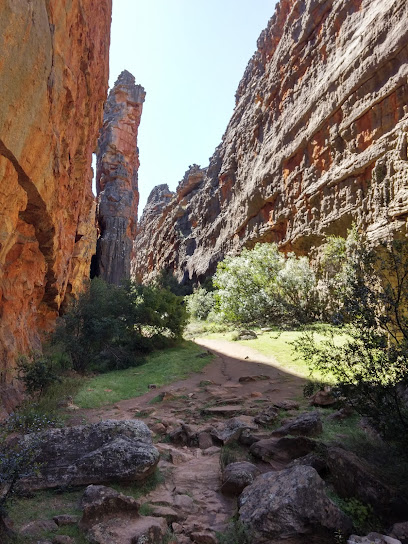
The Traveller
Experience the flavors of Citrusdal at The Traveller, where delightful meals and freshly brewed coffee await in a serene setting.
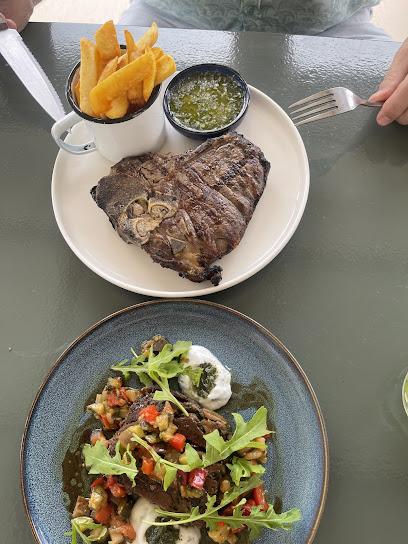
Eselbank Waterfall
Experience the breathtaking beauty of Eselbank Waterfall in Citrusdal, a serene escape perfect for nature lovers and adventurers alike.
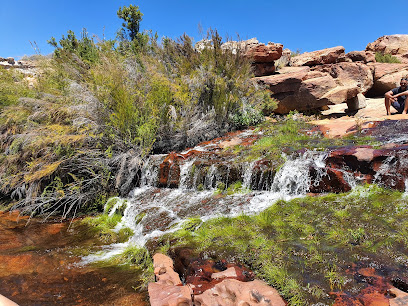
Middelberg Pass
Experience the stunning landscapes and thrilling adventures of Middelberg Pass, a scenic gem in South Africa perfect for outdoor enthusiasts and nature lovers.
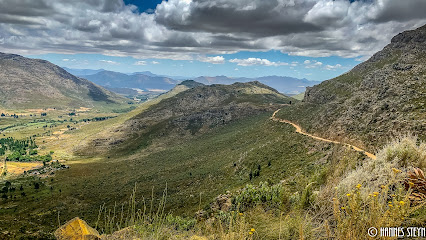
Biedouw Valley
Explore the enchanting beauty of Biedouw Valley, a serene ravine in the Cederberg mountains, perfect for nature lovers and outdoor enthusiasts.
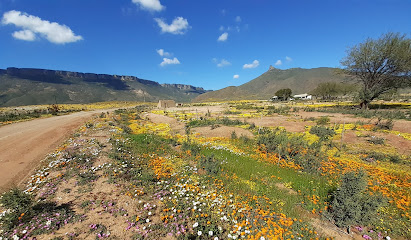
Cederberg
Explore the breathtaking Cederberg Mountains, a blend of stunning landscapes, rich cultural history, and thrilling outdoor adventures in South Africa.

Cederberg Park
Discover the breathtaking landscapes, rich biodiversity, and ancient history of Cederberg Park near Clanwilliam, a true natural paradise in South Africa.
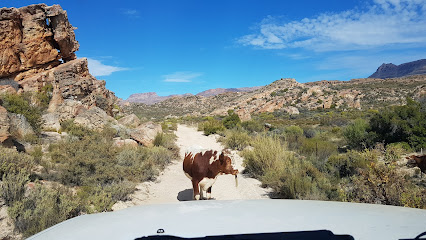
Essential places to dine
Diesel & Crème and The Karoo Moon Motel
Experience delicious cuisine and cozy accommodations at Diesel & Crème - your gateway to exploring Barrydale's beauty.
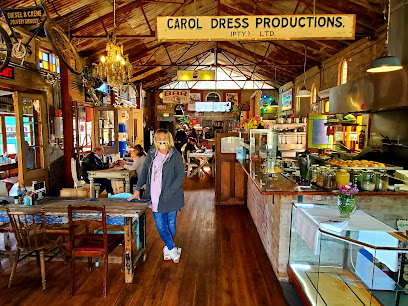
Piekenierskloof Mountain Resort By Dream Resorts
Experience tranquility at Piekenierskloof Mountain Resort in Citrusdal - where nature meets luxury in breathtaking surroundings.

The Hussar Grill George
Discover the ultimate steakhouse experience at The Hussar Grill George, where quality meets flavor in every bite.
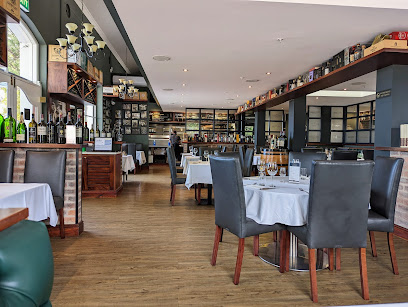
Kagga Kamma Nature Reserve
Experience unparalleled natural beauty at Kagga Kamma Nature Reserve - your perfect escape in the Cederberg mountains.
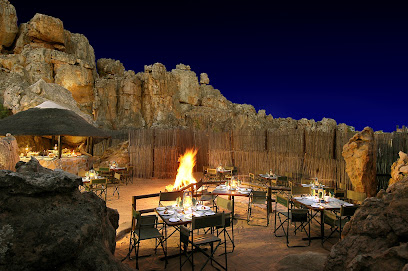
Desert Rose Farmstall
Discover fresh flavors and artisanal delights at Desert Rose Farmstall – your perfect pitstop in Koringberg.
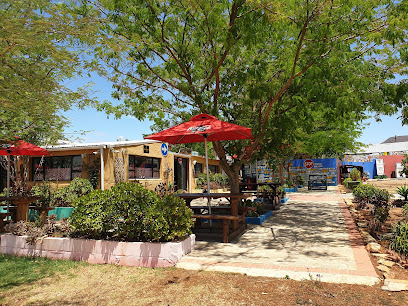
Cederberg Oasis
Discover family-friendly adventure at Cedarberg Oasis in South Africa's stunning Cederberg Conservancy, where nature meets comfort.

Citrusdal Country Lodge
Experience tranquility at Citrusdal Country Lodge – your gateway to nature's beauty in South Africa's Citrus Valley.
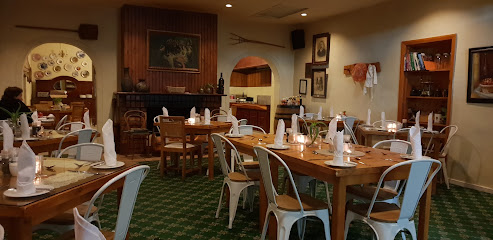
De Kelder Pub & Grill Clanwilliam
Experience authentic South African cuisine with stunning mountain views at De Kelder Pub & Grill in Clanwilliam.
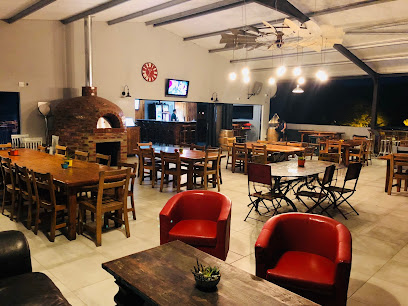
Kromrivier Cederberg Park
Explore Kromrivier Cederberg Park: A scenic haven combining nature's beauty with delightful dining experiences in South Africa's majestic mountains.

Traveller's Rest Accommodation
Experience culinary delights surrounded by breathtaking views at Traveller's Rest Accommodation in Clanwilliam.
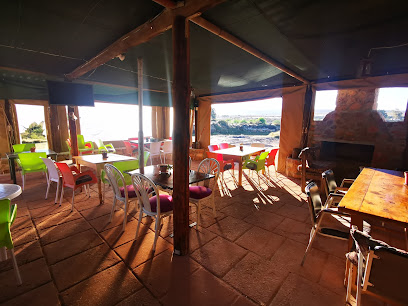
Cederkloof Botanical Retreat
Experience the tranquility of Cederkloof Botanical Retreat surrounded by stunning mountain views and lush gardens in Citrusdal.
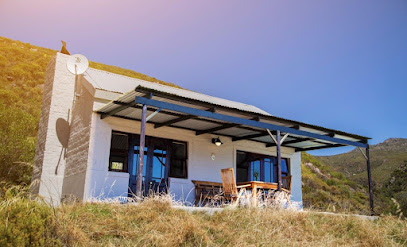
Mount Ceder | Cederberg | Accommodation | Restaurant | Activities
Discover Mount Ceder: A tranquil escape in the heart of South Africa's breathtaking Cederberg mountains with lodging, dining & outdoor activities.
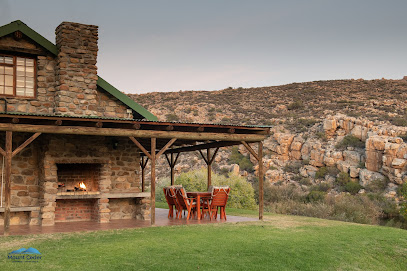
De Pakhuys
Experience unparalleled beauty and adventure at De Pakhuys in the Cederberg mountains – your perfect getaway awaits!
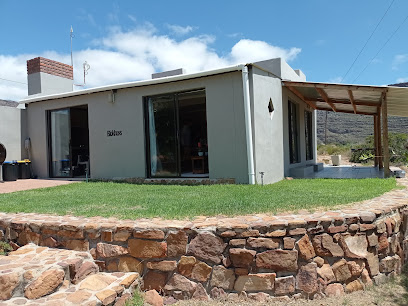
Gecko Creek Wilderness Lodge
Experience unparalleled natural beauty at Gecko Creek Wilderness Lodge in Cederberg - where adventure meets serenity amidst breathtaking landscapes.

Macgregors restaurant the baths (not open to public)
Experience exquisite dining at Macgregors Restaurant in Citrusdal - where local flavors meet stunning views for an unforgettable culinary journey.

Markets, malls and hidden boutiques
The Baths Natural Hot Springs
Discover tranquility and rejuvenation at The Baths Natural Hot Springs – a serene resort hotel surrounded by nature's beauty.
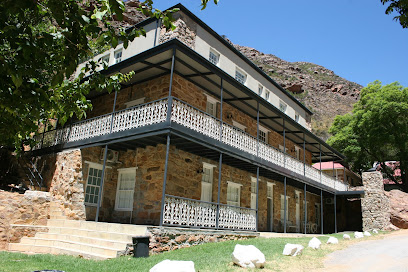
SUPERSPAR Clanwilliam
Explore Clanwilliam's vibrant culture and flavors at SUPERSPAR, where fresh produce and local delights await every traveler.

Cederberg Wilderness Area
Discover the breathtaking beauty and adventure of Cederberg Wilderness Area, a top destination for nature lovers and explorers in South Africa.
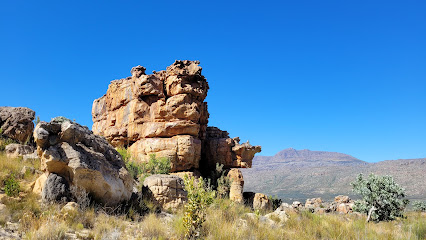
Cederberg Oasis
Experience family-friendly lodging at Cedarberg Oasis, nestled in the breathtaking Cederberg Conservancy, perfect for adventure and relaxation.

Kromrivier Cederberg Park
Discover the serene beauty and delicious flavors of Kromrivier Cederberg Park, a must-visit dining destination in the heart of the Cederberg mountains.
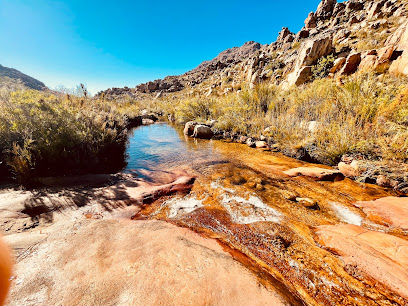
Mount Ceder | Cederberg | Accommodation | Restaurant | Activities
Experience the beauty of the Cederberg mountains at Mount Ceder, where comfort meets adventure and exquisite cuisine awaits.
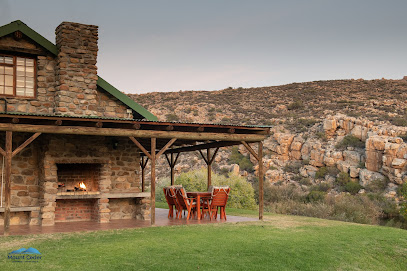
Stadsaal Caves
Explore Stadsaal Caves: A breathtaking blend of natural beauty and ancient history in the Cederberg Wilderness Area.
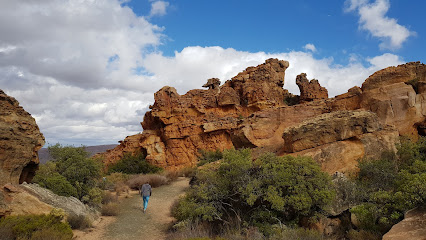
Enjo Nature Farm
Embrace nature at Enjo Nature Farm, where self-catering comfort meets breathtaking Cederberg landscapes, ideal for camping and relaxation.

Strassberger Shoes
Explore the finest selection of stylish and comfortable footwear at Strassberger Shoes in Clanwilliam, a true gem for shoe enthusiasts.
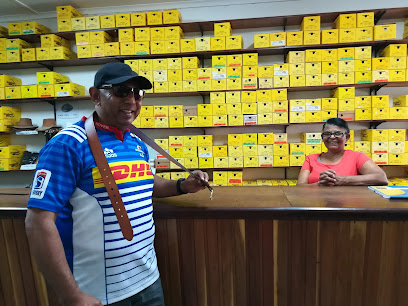
Driehoek Tourist Farm Cederberg
Experience the tranquil beauty of Cederberg at Driehoek Tourist Farm, where camping meets nature and adventure awaits.
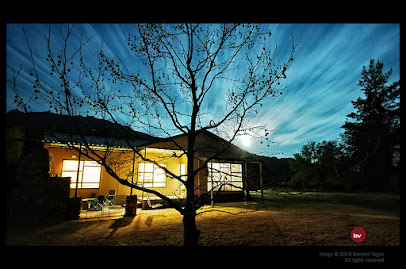
Gecko Creek Wilderness Lodge
Explore Gecko Creek Wilderness Lodge: a perfect blend of adventure and tranquility in the scenic Cederberg mountains.

Cederberg Camping and Hiking (Nuwerust Farm)
Experience the serene landscapes and outdoor adventures at Cederberg Camping and Hiking, a nature lover's paradise in the heart of the Cederberg mountains.
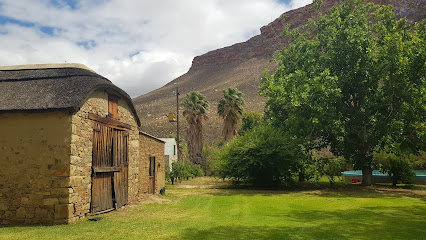
House of Rooibos @ Rooibos Country Club
Discover the rich flavors and heritage of rooibos tea at the House of Rooibos in Clanwilliam, South Africa – a tea lover's dream destination.
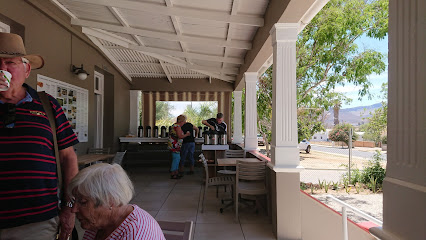
Cederberg Wines
Experience exquisite wines and breathtaking views at Cederberg Wines, a gem in South Africa's wine country.
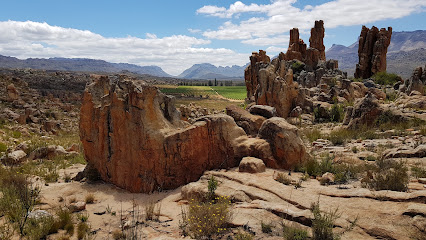
Matjiesrivier Nature Reserve
Explore the breathtaking landscapes and rich biodiversity at Matjiesrivier Nature Reserve, an ideal getaway for nature lovers and families.
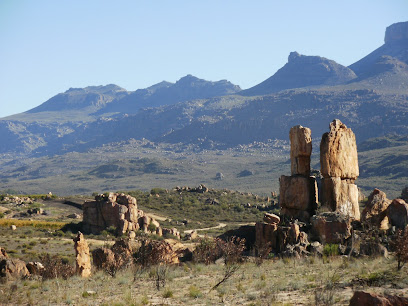
Essential bars & hidden hideouts
Old Bridge Restaurant & Bar
Experience culinary delights and vibrant atmosphere at Old Bridge Restaurant & Bar in Somerset West, Cape Town, a culinary gem for every traveler.
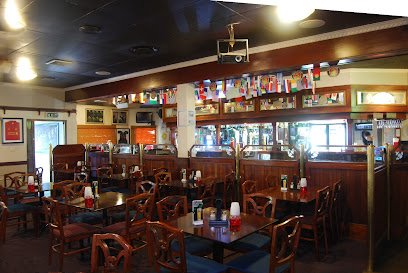
Kagga Kamma Nature Reserve
Experience the breathtaking beauty and tranquility of Kagga Kamma Nature Reserve, a perfect escape for nature lovers in the Cederberg region.
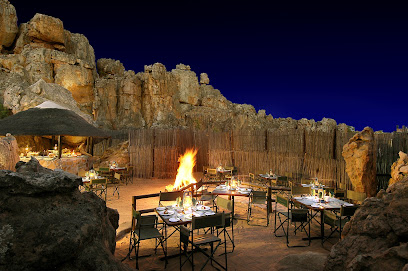
Calabash Bush Pub
Discover the charm of Calabash Bush Pub in Bain's Kloof Pass, where delicious South African cuisine meets breathtaking mountain views.
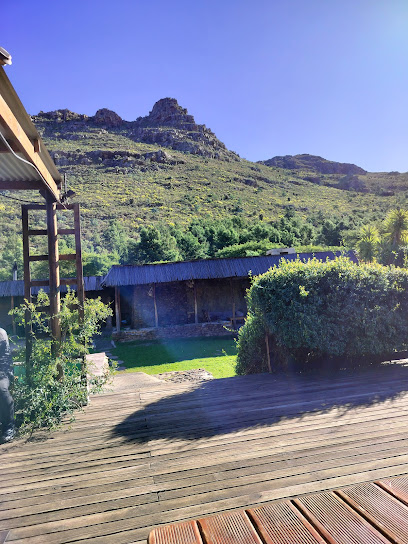
Cederberg Wilderness Area
Explore the stunning landscapes, rich biodiversity, and ancient rock art of Cederberg Wilderness Area in South Africa's West Coast region.
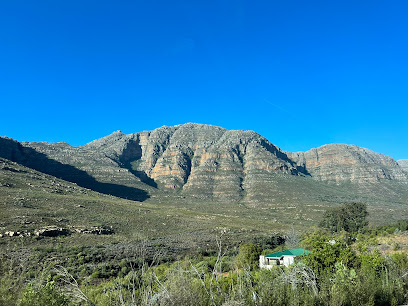
Cederberg Oasis
Experience the serene beauty and adventure of Cederberg Oasis, a unique indoor lodging and children's camp in the heart of the Cederberg mountains.
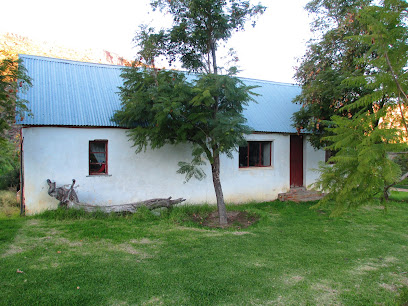
Citrusdal Country Lodge
Discover the tranquility of nature at Citrusdal Country Lodge, where comfort meets stunning landscapes in South Africa's Citrusdal region.
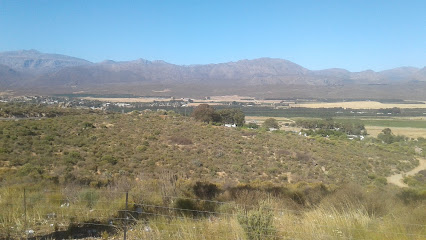
De Kelder Pub & Grill Clanwilliam
Discover De Kelder Pub & Grill in Clanwilliam: Enjoy delicious food and stunning views of the Cederberg mountains in a warm, welcoming atmosphere.
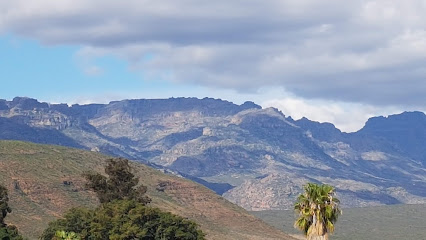
Kromrivier Cederberg Park
Experience the perfect blend of local cuisine and breathtaking mountain scenery at Kromrivier Cederberg Park.
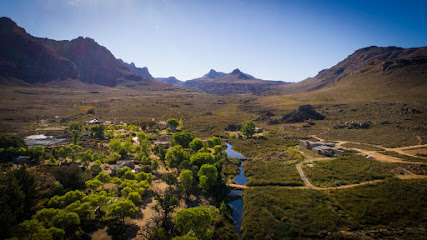
Traveller's Rest Accommodation
Experience the serenity and flavor of Clanwilliam at Traveller's Rest Accommodation, a delightful restaurant amidst the Cederberg mountains.
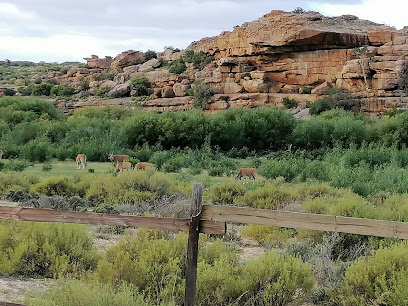
Mount Ceder | Cederberg | Accommodation | Restaurant | Activities
Experience the serene beauty of Mount Ceder, where comfortable lodging meets breathtaking hiking trails and delightful dining in the heart of the Cederberg.
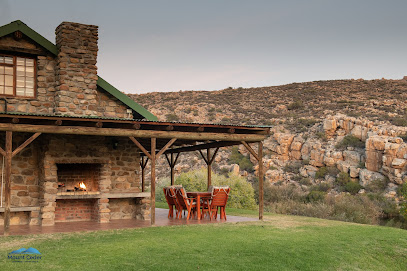
Stadsaal Caves
Discover the stunning Stadsaal Caves in the Cederberg Wilderness Area, an unforgettable experience of nature's beauty and cultural heritage.
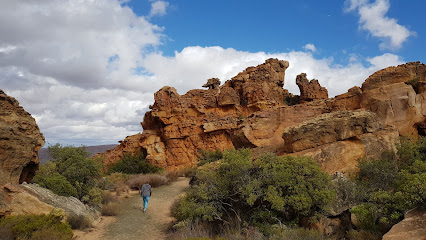
Enjo Nature Farm
Discover the serene beauty of Enjo Nature Farm, a self-catering retreat in the stunning Cederberg mountains, perfect for relaxation and outdoor adventures.
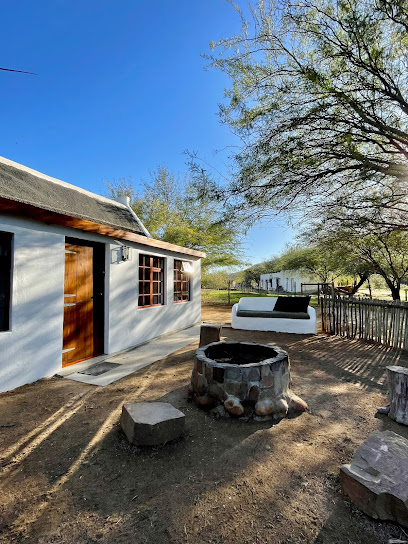
Salome's Grapevine
Discover Salome's Grapevine, a cozy coffee shop in Citrusdal, where local flavors and a warm atmosphere await every tourist.
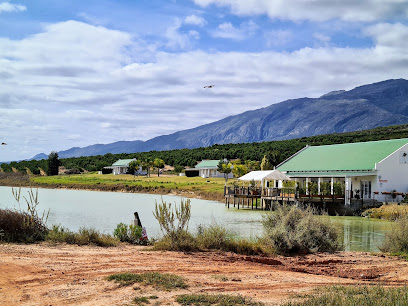
De Pakhuys
Experience the tranquility and adventure of De Pakhuys, a perfect blend of camping and resort-style comfort in the heart of Clanwilliam.
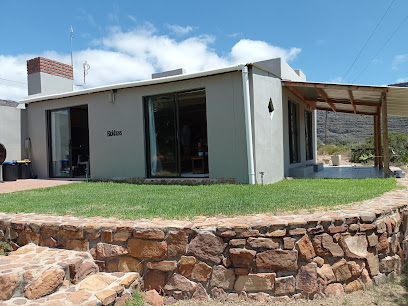
Rooibos Tea House
Experience the authentic taste of Rooibos tea in a cozy tea house setting in Clanwilliam, South Africa, surrounded by stunning natural beauty.
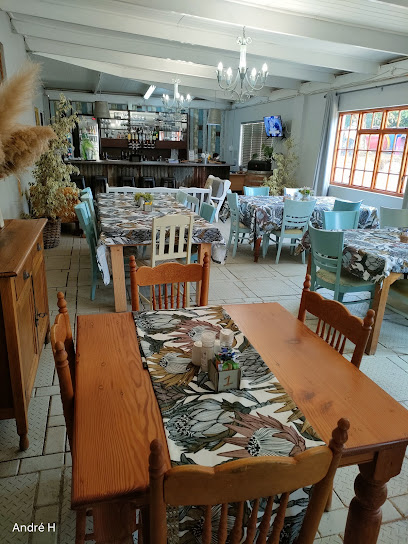
Local Phrases about Cederberg Mountains
-
- HelloMolo
[Moh-loh] - GoodbyeTotsiens
[Tots-ee-ens] - YesJa
[Yah] - NoNee
[Nay] - Please/You're welcomeAsseblief
[Ah-ssuh-bleef] - Thank youDankie
[Dunk-ee] - Excuse me/SorryJammer
[Yahm-mer] - How are you?Hoe gaan dit?
[Hoo gaan dit] - Fine. And you?Goed. En jy?
[Goot. En y] - Do you speak English?Praat jy Engels?
[Praht y Eng-uls] - I don't understandEk verstaan nie
[Ehk verst-ahn nee]
- HelloMolo
-
- I'd like to see the menu, pleaseEk wil graag die spyskaart sien, asseblief
[Ehk vill grahgh dee spays-kart seen, ah-ssuh-bleef] - I don't eat meatEk eet nie vleis nie
[Ehk ate nee flace nee] - Cheers!Gesondheid!
[Guh-sund-hate] - I would like to pay, pleaseEk wil asseblief betaal
[Ehk vill ah-ssuh-bleef buh-tahl]
- I'd like to see the menu, pleaseEk wil graag die spyskaart sien, asseblief
-
- Help!Hulp!
[Help] - Go away!Gaan weg!
[Gahn vehg] - Call the Police!Bel die Polisie!
[Bell dee poh-lee-see] - Call a doctor!Bel 'n dokter!
[Bell un dohk-tuh] - I'm lostEk is verlore
[Ehk is fuh-lor-uh] - I'm illEk is siek
[Ehk is seek]
- Help!Hulp!
-
- I'd like to buy...Ek wil koop...
[Ehk vill kohp] - I'm just lookingEk kyk net
[Ehk kike net] - How much is it?Hoeveel kos dit?
[Hoo-veel kohs dit] - That's too expensiveDit is te duur
[Dit is teh doo-r] - Can you lower the price?Kan jy die prys verlaag?
[Kahn y dee prayse fuh-lahg]
- I'd like to buy...Ek wil koop...
-
- What time is it?Hoe laat is dit?
[Hoo laht is dit] - It's one o'clockDit is een uur
[Dit is ayn oor] - Half past (10)Half tien
[Half teen] - MorningOggend
[Oh-ghend] - AfternoonMiddag
[Mid-dahg] - EveningAand
[Ahnt] - YesterdayGister
[Gis-tuhr] - TodayVandag
[Fuhn-dahg] - TomorrowMôre
[Moh-reh] - 1Een
[Ayn] - 2Twee
[Twee] - 3Drie
[Dree] - 4Vier
[Feer] - 5Vyf
[Fayf] - 6Ses
[Says] - 7Sewe
[Seh-veh] - 8Agt
[Aght] - 9Nege
[Neh-ghuh] - 10Tien
[Teen]
- What time is it?Hoe laat is dit?
-
- Where's a/the...?Waar is 'n/die...?
[Vahr is un/dee] - What's the address?Wat is die adres?
[Vut is dee uhd-rehs] - Can you show me (on the map)?Kan jy my wys (op die kaart)?
[Kahn y may vays (ohp dee kart)] - When's the next (bus)?Wanneer is die volgende (bus)?
[Vuh-neer is dee fuhl-ehn-duh (buhs)] - A ticket (to ....)'n Kaartjie (na ....)
[Un kart-yuh (nah)]
- Where's a/the...?Waar is 'n/die...?
History of Cederberg Mountains
-
The Cederberg Mountains are renowned for their ancient San rock art, some of which dates back as far as 6,000 years. These artworks, created by the indigenous San people, depict various aspects of their daily lives, including hunting scenes, dance rituals, and spiritual ceremonies. The paintings are found in caves and on rocky overhangs and provide invaluable insights into the early human inhabitants of the region.
-
Before the arrival of European settlers, the Cederberg region was inhabited by the Khoikhoi people. Known for their pastoral lifestyle, the Khoikhoi herded cattle and sheep across the rugged terrain. Their presence in the area left a lasting cultural impact, including place names and certain traditional practices that have persisted through the centuries.
-
The Cederberg Mountains were first documented by European explorers in the 17th century. Dutch and later British settlers were drawn to the region for its natural resources, including fertile valleys suitable for farming. These early explorations led to the establishment of small settlements and farms, which have since grown into the towns and communities we see today.
-
As European settlers expanded their agricultural activities in the Cederberg region, conflicts arose with the indigenous peoples. The struggle for land and resources led to several skirmishes and confrontations. These conflicts are a somber chapter in the history of the area and highlight the complex interactions between settlers and indigenous populations.
-
In the early 20th century, the Cederberg Mountains gained fame as the birthplace of the rooibos plant. This indigenous shrub, which only grows in the Cederberg region, was discovered to have numerous health benefits. Rooibos tea has since become a globally recognized product, contributing significantly to the local economy and cultural identity of the area.
-
Established in 1830 by German missionaries of the Rhenish Missionary Society, the Wupperthal Mission Station is a historical landmark in the Cederberg Mountains. Originally founded to spread Christianity and provide education to the local population, Wupperthal has grown into a small, vibrant community. The mission's historic buildings and its ongoing cultural activities offer a glimpse into the region's missionary past.
-
Completed in 1935, the Clanwilliam Dam is a significant engineering feat in the Cederberg Mountains. Built on the Olifants River, the dam has played a crucial role in irrigation and agriculture in the region. The reservoir created by the dam is also a popular recreational spot, attracting visitors for boating, fishing, and other water activities.
-
Declared a wilderness area in 1973, the Cederberg Wilderness Area is a protected region that showcases the stunning natural beauty and biodiversity of the Cederberg Mountains. The designation has helped preserve the unique flora and fauna of the area, including the endangered Clanwilliam cedar trees. The wilderness area is also a popular destination for hikers, climbers, and nature enthusiasts.
Cederberg Mountains Essentials
-
The Cederberg Mountains are located in the Western Cape Province of South Africa, approximately 250 kilometers north of Cape Town. The most convenient way to reach the Cederberg Mountains is by car. From Cape Town, take the N7 highway towards Clanwilliam, which is the gateway to the Cederberg region. The journey by car takes about 2.5 to 3 hours. Alternatively, you can take a bus or arrange a shuttle service from Cape Town to Clanwilliam. There are no direct train services to the Cederberg Mountains.
-
Within the Cederberg region, the best way to get around is by car due to the vast and rugged terrain. Renting a 4x4 vehicle is highly recommended for accessing remote areas and off-road trails. Local taxis and private shuttles can be arranged for specific routes, but they are limited. There are also guided tours available that provide transportation to major attractions. Cycling and hiking are popular modes of exploring the area for those who enjoy outdoor activities.
-
The official currency in South Africa is the South African Rand (ZAR). Credit and debit cards are widely accepted in most hotels, restaurants, and shops in the Cederberg region. However, it is advisable to carry some cash, especially when visiting remote areas or smaller establishments where card facilities might not be available. ATMs can be found in Clanwilliam and other larger towns in the region.
-
The Cederberg Mountains are generally a safe destination for tourists. However, standard precautions should be taken, such as not leaving valuables in plain sight in your vehicle and being cautious when hiking alone. There are no specific high-crime areas targeting tourists in the Cederberg region, but it is always best to stay vigilant. Wildlife encounters are possible, so be aware of your surroundings, especially when hiking.
-
In case of an emergency, dial 10111 for police assistance or 10177 for medical emergencies. Clanwilliam has a local police station and medical facilities. It is recommended to have travel insurance that covers medical emergencies and adventure activities. For minor health issues, pharmacies are available in Clanwilliam and other larger towns. Always carry a first aid kit, especially when hiking or exploring remote areas.
-
Fashion: Do dress in layers and wear sturdy hiking boots for outdoor activities. Avoid wearing flashy jewelry. Religion: Do respect local customs and traditions. There are no specific religious restrictions in the area. Public Transport: Do plan your trips in advance as public transport options are limited. Don't rely solely on public transport for exploring the region. Greetings: Do greet people with a friendly 'hello' or 'howzit.' A handshake is common. Eating & Drinking: Do try local dishes and wines. Don’t forget to stay hydrated, especially during hikes. Avoid drinking tap water; opt for bottled water instead.
-
To experience the Cederberg Mountains like a local, visit the local farms and wineries to sample regional produce and wines. Engage with locals at markets and festivals to learn about their way of life. Don’t miss the ancient San rock art sites, which offer a glimpse into the region's rich history. For a unique experience, stay in one of the remote cottages or campsites to fully immerse yourself in the natural beauty of the Cederberg Mountains. Hiking the Wolfberg Cracks and Arch, as well as exploring the Maltese Cross, are must-do activities for outdoor enthusiasts.
Trending Landmarks in Cederberg Mountains
-
The Baths Natural Hot Springs
-
Kagga Kamma Nature Reserve
-
Cederberg Wilderness Area
-
Kromrivier Cederberg Park
-
Cederberg Algeria Campsite
-
Cederkloof Botanical Retreat
-
Sanddrif Holiday Resort, Cederberg
-
Mount Ceder | Cederberg | Accommodation | Restaurant | Activities
-
Stadsaal Caves
-
Koue Bokkeveld Mountain Catchment Area
-
Enjo Nature Farm
-
Sevilla Rock Art Trail
-
Cederberg Algeria Wilderness Cottages
-
Driehoek Tourist Farm Cederberg
-
Gecko Creek Wilderness Lodge
Nearby Cities to Cederberg Mountains
-
Things To Do in Keetmanshoop
-
Things To Do in Kimberley
-
Things To Do in Lüderitz
-
Things To Do in Bloemfontein
-
Things To Do in East London
-
Things To Do in Mafeteng
-
Things To Do in Mohale's Hoek
-
Things To Do in Quthing
-
Things To Do in Maseru
-
Things To Do in Mariental
-
Things To Do in Teyateyaneng
-
Things To Do in Leribe
-
Things To Do in Thaba-Tseka
-
Things To Do in Butha-Buthe
-
Things To Do in Mokhotlong

